ASK THE MXPERTS: HOW WE GOT OUR 2020-21 YAMAHA YZ450F UP OVER-60 HORSEPOWER
HOW TO GIVE YOUR 2020-2021
YAMAHA YZ450F 60.83 HORSEPOWER
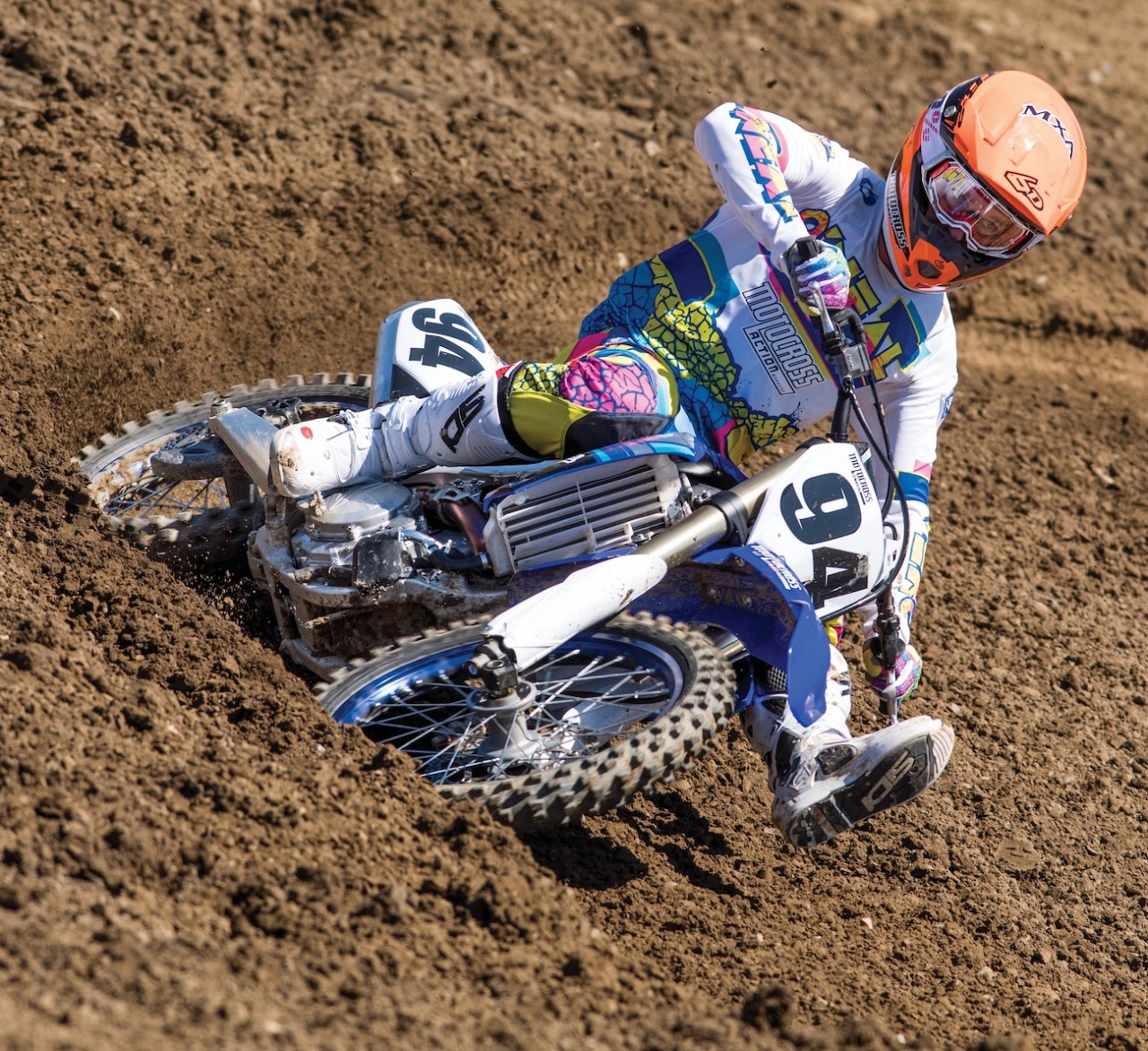 The MXA test riders like the 2020-2021 Yamaha YZ450F powerband, but we have always thought that the “piece of toast” air filter was holding it back. We decided to do something about it.
The MXA test riders like the 2020-2021 Yamaha YZ450F powerband, but we have always thought that the “piece of toast” air filter was holding it back. We decided to do something about it.
Dear MXperts,
I was reading an REM race report from Glen Helen, and I saw that MXA was testing an air filter mod that produced 2 more horsepower out of a stock 2020 YZ450F engine. It was only a caption on a photo of a Yamaha rider, but I wonder if the MXperts could tell me if it is true that you can get 2 horsepower from an air filter?
 The problem with the stock 2020 “piece of toast” air filter is that it lays on top of the wire screen. Every time the engine goes through its stroke, the air filter pulses up and down—and the suction is actually enough to suck the oil filter oil and the grit out of the center of the foam.
The problem with the stock 2020 “piece of toast” air filter is that it lays on top of the wire screen. Every time the engine goes through its stroke, the air filter pulses up and down—and the suction is actually enough to suck the oil filter oil and the grit out of the center of the foam.
The more time the MXA wrecking crew spent with the stock Yamaha YZ450F air filter, the more they realized that the YZ450F air filter and airbox didn’t flow enough air to support an engine that can gulp 600 gallons of air a minute. We had seen riders drill holes in the top of the YZ450F airbox cover to get air into the airbox, but we didn’t want to do that because the turbulent combination of air coming in through the radiator wing vents and the air sucking though the drilled airbox cover holes could not achieve the laminar flow air stream that produces horsepower. That’s not to say the holes wouldn’t introduce more air into the YZ450F, just that it wouldn’t be optimum air.
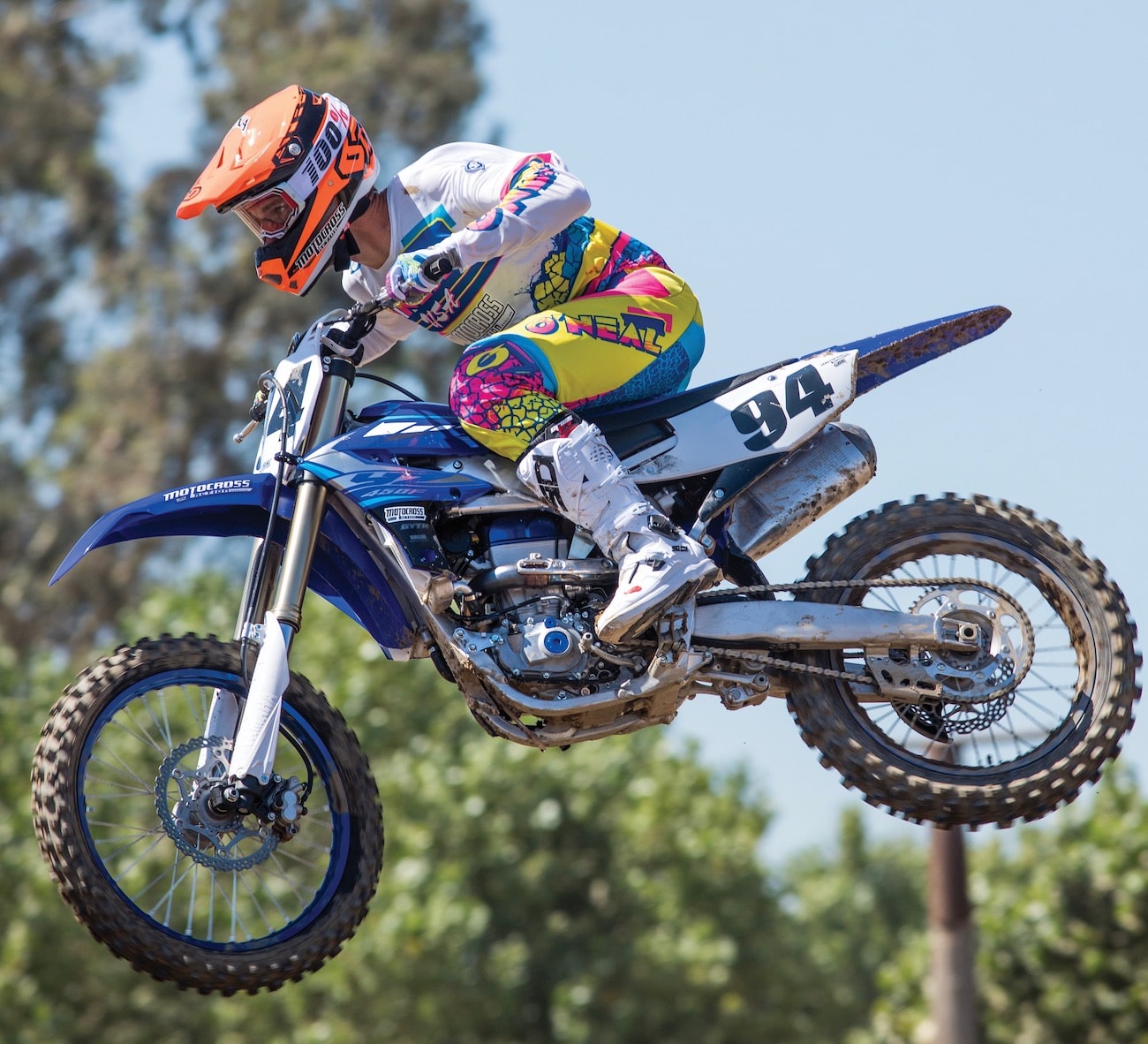 A stock 2020 Yamaha YZ450F makes 58.56 horsepower. Our goal was to crack 60 horses with no cam, valve, porting or pipe mods.
A stock 2020 Yamaha YZ450F makes 58.56 horsepower. Our goal was to crack 60 horses with no cam, valve, porting or pipe mods.
MXA wanted to get the 2020 YZ450F airbox to breathe better to allow the engine to run up to its potential. Given that MXA is not a fan of the 2020 YZ450F’s flat “piece of toast” air filter, especially since it lies flat on the airbox’s wire screen, we were open to proposed changes. In stock configuration, the YZ450F air filter vibrates up and down with the pulses of the engine. Those 10,000 pulsating throbs suck the oil out of the filter and the dirt through it.
STEP ONE: STOP THE STOCK AIR FILTER FROM
DRUMMING AGAINST THE WIRE SCREEN
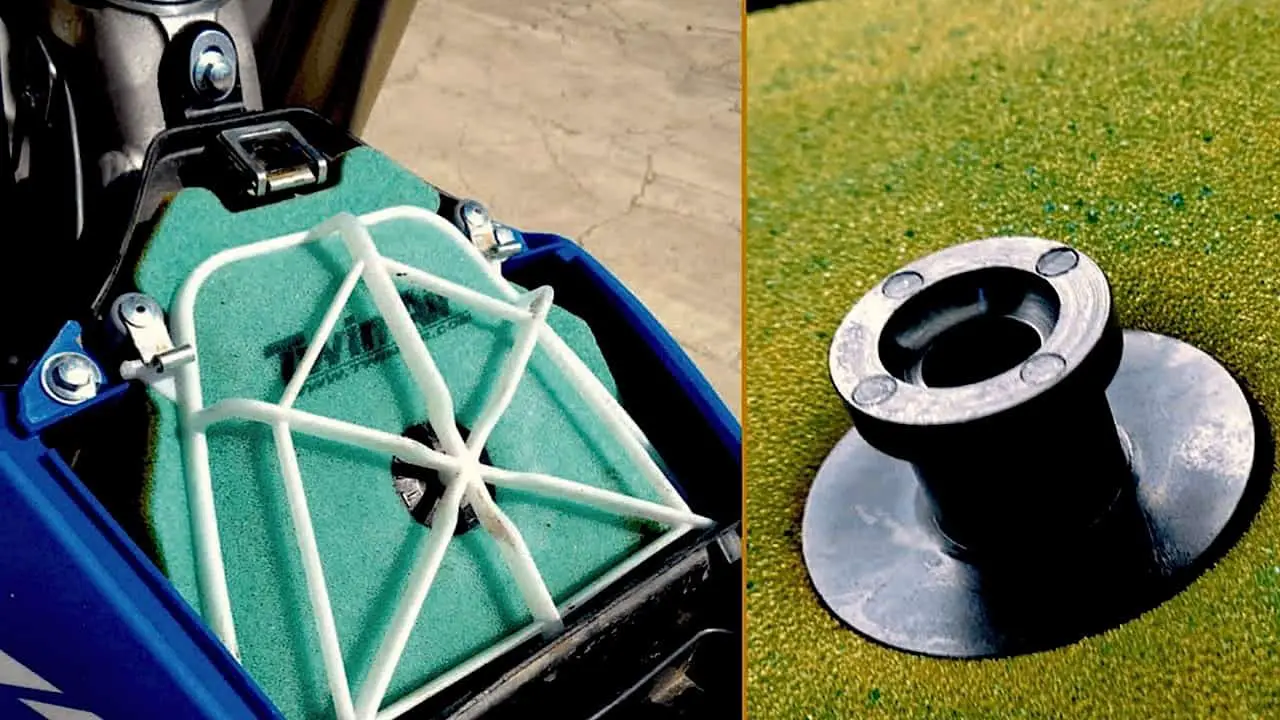 If you don’t want to buy a Twin Air Power Flow air filter kit, you should run the Twin Air YZ450F air filter. It has a top hat spacer (right) that lifts their air filter off of the wire screen to stop it from drumming.
If you don’t want to buy a Twin Air Power Flow air filter kit, you should run the Twin Air YZ450F air filter. It has a top hat spacer (right) that lifts their air filter off of the wire screen to stop it from drumming.
Step one was to stop, or at the very least lessen, the effects of the engine’s pulses on the air filter. Early on, we called Twin Air and asked for help with this problem. It turns out that the Yamaha Grand Prix team had already asked for the same help. Twin Air built the GP team a double-layer YZ450F filter that sat on a 1/2-inch tall top-hat washer that kept the filter from touching the wire screen. Twin Air sent us some of these filters to test. We liked them, because they solved the problems associated with the filter banging against the wire screen; however, on the dyno, the Twin Air top-hat filter did not make any significant power increases.
STEP TWO: THE TWIN AIR POWERFLOW KIT
MADE MORE HORSEPOWER
 The Twin Air Power Flow air filter kit has a new mounting bracket, cage and filter. It also eliminates the wire backfire screen for better air flow—don’t worry the Twin Air filter is flame resistant.
The Twin Air Power Flow air filter kit has a new mounting bracket, cage and filter. It also eliminates the wire backfire screen for better air flow—don’t worry the Twin Air filter is flame resistant.
Step two was to install a Twin Air Power Flow kit. This kit includes an anodized aluminum mounting plate that replaces the stock sealing ring. The aluminum plate also eliminates the wire backfire screen, which is made unnecessary by a fire-resistant air filter.
 This is how far Twin Air’s domed air filter cage moves the filter above the intake tract—we also tested whether it was better to have more air space inside the filter or inside the airbox (above the air filter).
This is how far Twin Air’s domed air filter cage moves the filter above the intake tract—we also tested whether it was better to have more air space inside the filter or inside the airbox (above the air filter).
The PowerFlow air filter is not a flat piece of foam; it is a traditional domed air filter that doubles the surface area of the stock piece of toast and is supported by an internal aluminum air filter cage. With the Power Flow kit installed, the test riders immediately reported a major increase in power, most noticeably from bottom to mid and on top. It should be noted that we did all the testing with the stock YZ450F map.
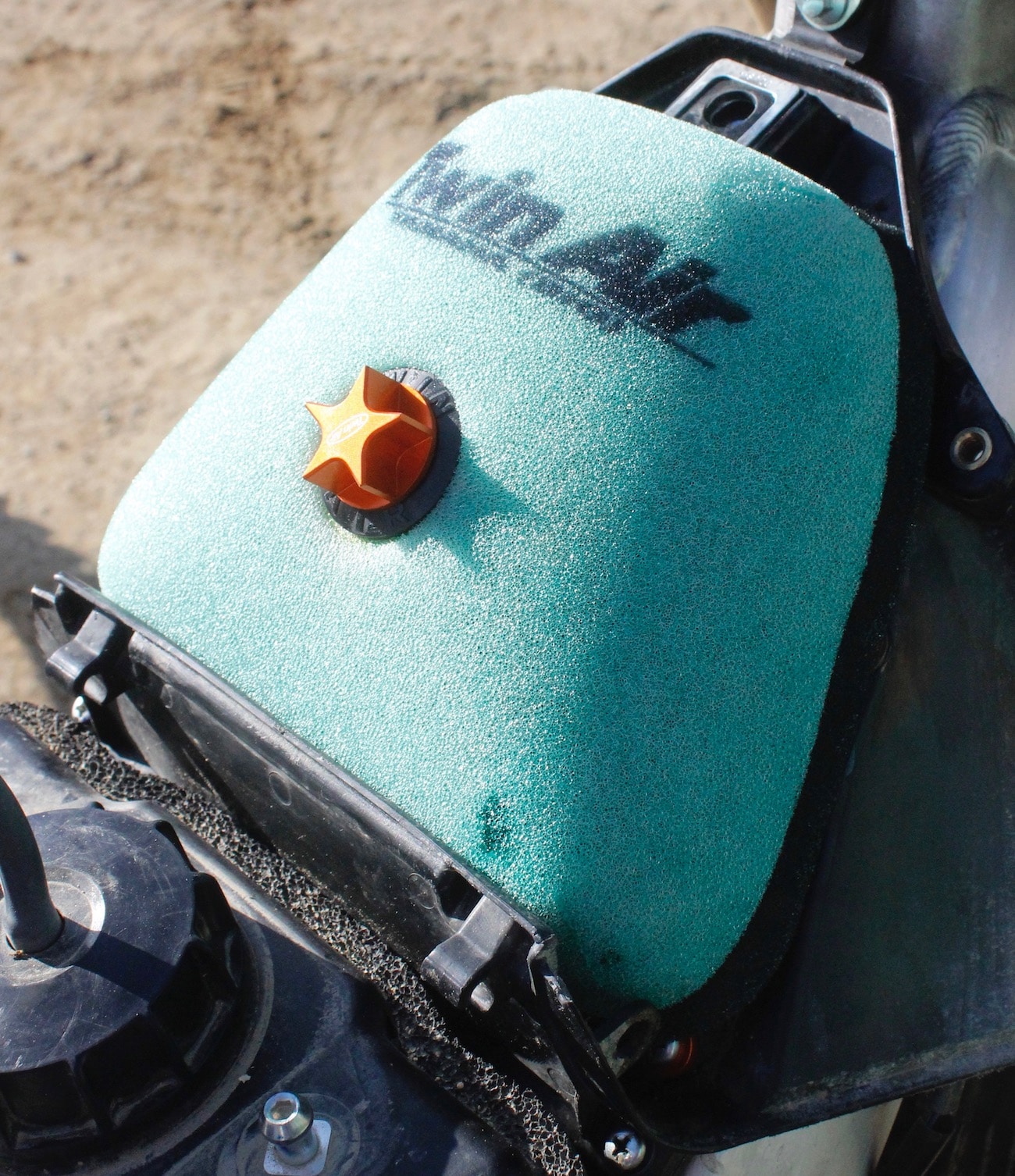 The Power Flow kit took the power from 58.56 to 59.72 with with a healthy gain across the board.
The Power Flow kit took the power from 58.56 to 59.72 with with a healthy gain across the board.
We took this setup to the dyno and ran it against the stock YZ450F air filter arrangement. At 6000 rpm, the stock filter made 36.68 horsepower while the PowerFlow kit made 38.87 (2.2 horsepower more). At 7000 rpm, the stock filter made 45.52 horsepower, while the PowerFlow kit made 47.29 horsepower (1.77 horsepower more). Across the midrange, from 8000 rpm to 9000 rpm, the stock filter and the Twin Air PowerFlow made the exact same horsepower; however, at 10,000 rpm, the stock filter made 58.04 horsepower while the PowerFlow filter made 59.72 horsepower (1.68 horsepower more). Peak horsepower, at 9700 rpm, was up 1.35 horsepower with the PowerFlow kit, while torque went from 34.36 lb./ft to 35.54 lb./ft.
The Twin Air PowerFlow air filter kit not only made a big improvement in overall horsepower, the throttle response improved and top-end over-rev was made more usable. Great kit.
STEP THREE: COBBING SOMETHING UGLY
BUT EFFECTIVE TOGETHER TO BOOST THE POWER EVEN MORE
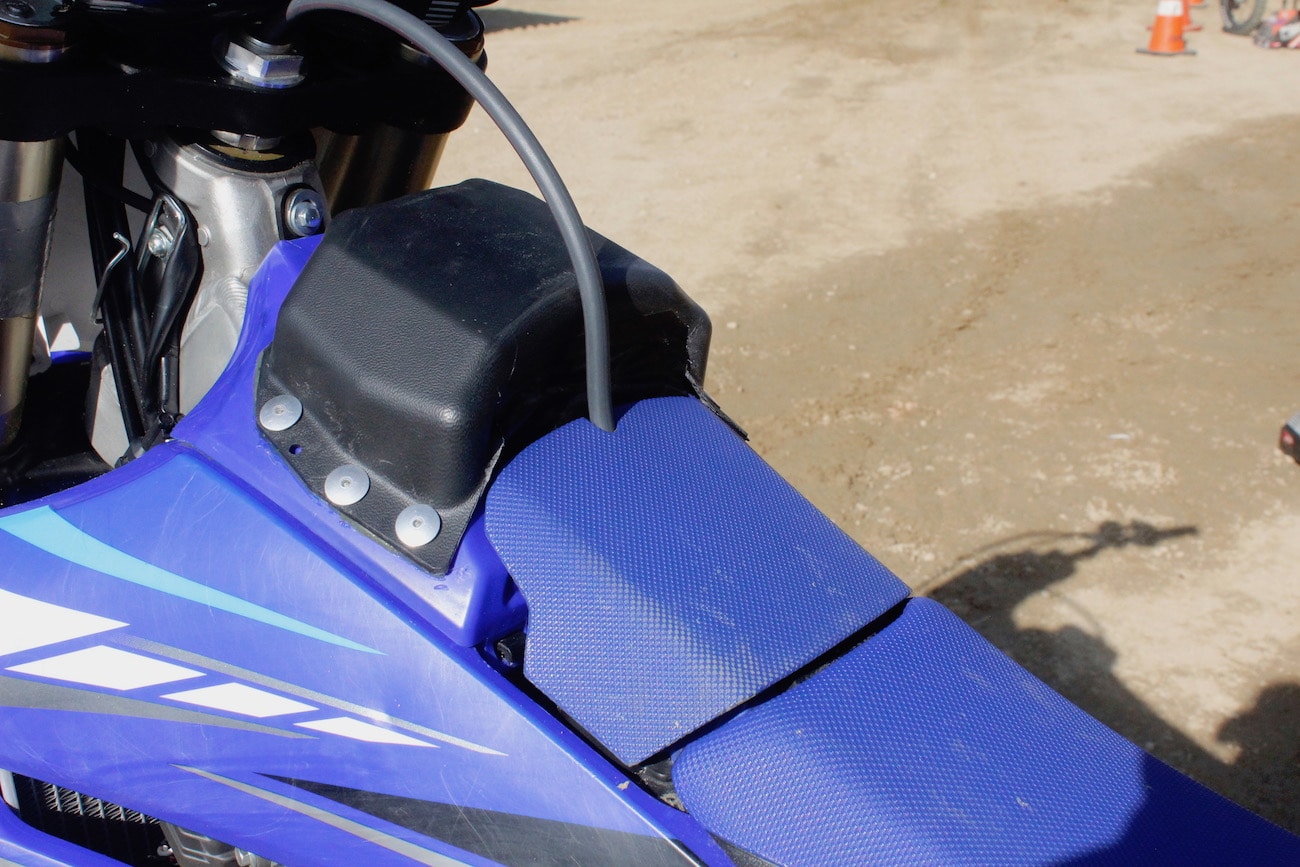 We knew that the stock Yamaha air filter design didn’t flow very much air, but no one made a larger airbox, so we cobbed one together out of some old plastic parts. It wasn’t attractive, but it made horsepower. The Twin Air Power Flow kit and MXA’s humpback cover jump horsepower from 58. 56 to 60.31 horsepower.
We knew that the stock Yamaha air filter design didn’t flow very much air, but no one made a larger airbox, so we cobbed one together out of some old plastic parts. It wasn’t attractive, but it made horsepower. The Twin Air Power Flow kit and MXA’s humpback cover jump horsepower from 58. 56 to 60.31 horsepower.
Step three was to enlarge the size of the stock Yamaha airbox cover. We did this by taking an old-style, 2017, humpback, Twin Air Power Flow YZ450F airbox cover and trimming it down to fit on the new-generation 2020 YZ450F airbox lid. We made paper templates and cut the excess material from the 2017 humpback lid to match the hole we cut in the top of the stock 2020 airbox lid. We glued and pop-riveted the two parts together. All of this handiwork gave us an airbox with twice the air volume to match our Twin Air Power Flow filter with twice the surface area.
On the track, the MXA test riders said that the YZ450F revved much faster, so fast that it went through each gear’s powerband quicker than before. We tested two air filter arrangements, courtesy of an aluminum spacer. Without the spacer under the cage, we had more air volume between the top of the filter and the humpback airbox lid. With the spacer installed, the air filter was lifted up to put more air inside the air filter and less above it. The test riders quickly discerned that more air above the filter delivered the best power.
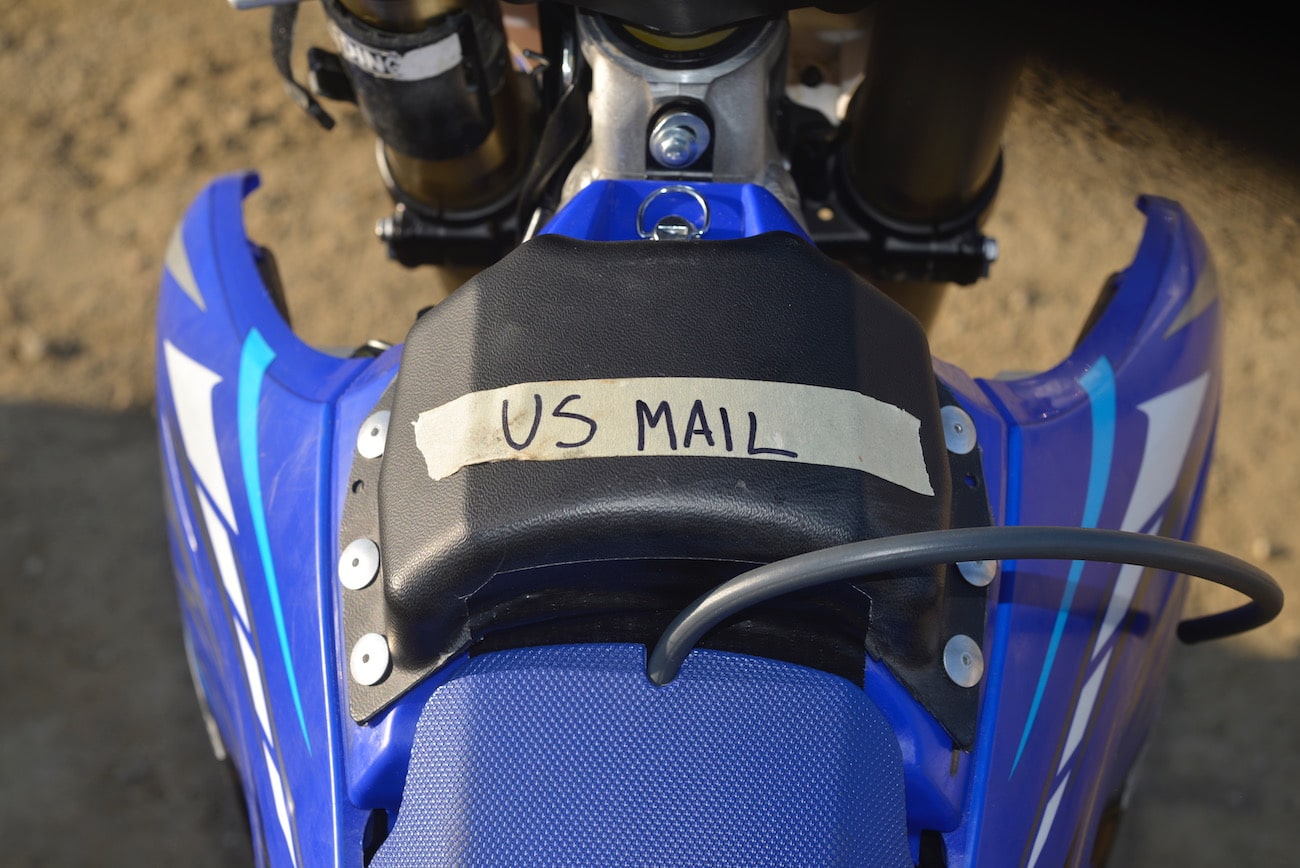 Pit jokers were always posting notes on the humpback airbox cover.
Pit jokers were always posting notes on the humpback airbox cover.
Back at the dyno, we ran the Rube Goldberg-designed humpback Pro Flow airbox against the stock YZ450F setup. The peak horsepower on our 2020 YZ450F jumped to 60.31 horsepower with the Quasimoto airbox cover installed compared to 58.56 with the stock YZ450F airbox cover.
This was a bone-stock 2020 YZ450F engine with 30 hours on it making 60-plus horsepower with nothing more than a Twin Air Pro Flow air filter kit and a jerry-rigged, and ugly, airbox cover. Impressive stuff.
STEP FOUR: RUNNING OUR FRANKENSTEIN SET-UP WITH
THE TRAVIS PRESTON TP-3 MAP
 We did all of original testing with the stock YZ450F map, but once we started to get better and better power, we decided to run one last test with the Travis Preston TP-3 map. It loved the extra air and the horsepower jumped again—this time to 60.83 horsepower.
We did all of original testing with the stock YZ450F map, but once we started to get better and better power, we decided to run one last test with the Travis Preston TP-3 map. It loved the extra air and the horsepower jumped again—this time to 60.83 horsepower.
Step four, our final test was to run the Travis Preston TP-3 map with the humpback cover and Pro Flow filter. We are big fans of the Travis Preston map because it smooths out the power delivery from bottom to mid and then picks up at 8500 rpm for added top-end power and a lot more over-rev. So, what did the TP-3 map do when combined with our Frankenstein airbox? How about 60.83 horsepower at the 9700 rpm peak (and it stayed above 59 horsepower for an impressive 1600 rpm range).
 We don’t expect you to build your own airbox cover because we just wanted to show the Yamaha R&D department how much free power they were leaving on the table.
We don’t expect you to build your own airbox cover because we just wanted to show the Yamaha R&D department how much free power they were leaving on the table.
WHAT MXA LEARNED, BY TRYING TO LEARN SOMETHING—
THERE’S A LESSON FOR ALL IN THIS EXPERIMENT
The biggest thing we learned is something that we already knew: the 2020 YZ450F airbox is a hindrance to the performance of the 2020 YZ450F. If MXA was able to up the horsepower, improve the sealing and increase the torque with a $259.95 Twin Air PowerFlow kit and some do-it-yourself modifications to the airbox lid, we would like to see what Yamaha’s engineers could do at the factory.
In the end, the aftermarket responded with larger airbox covers, some made from carbon fiber and some from molded plastic




Comments are closed.